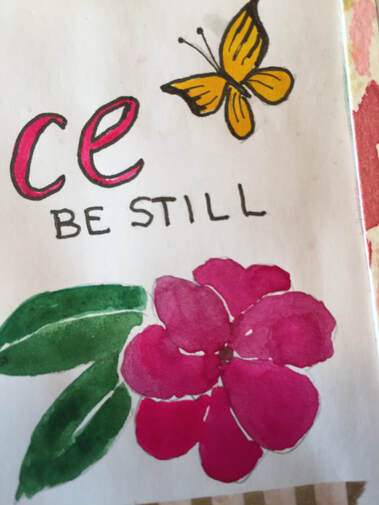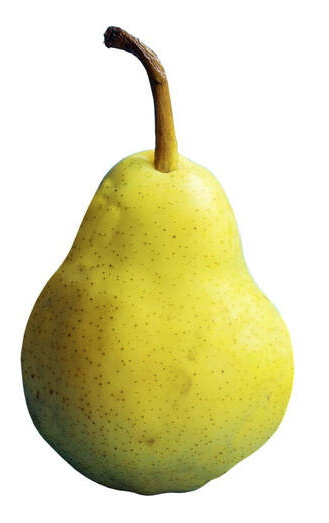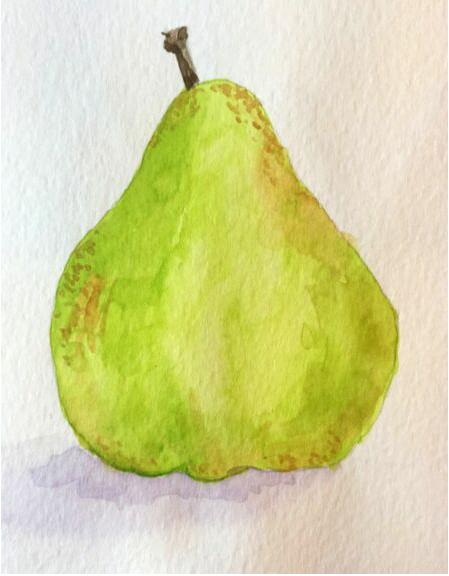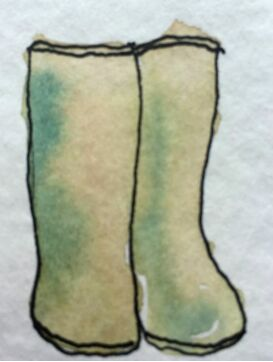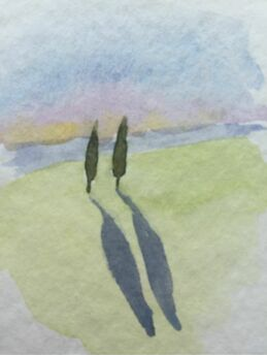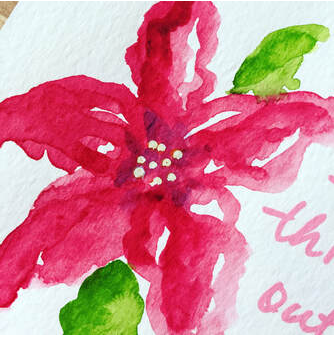Watercolor Sketchbook Journalling
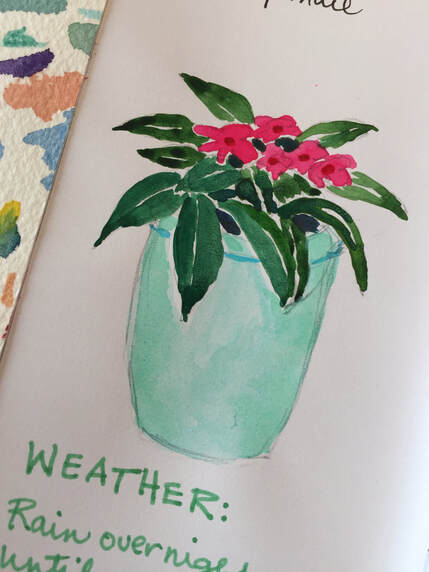
I've always been attracted to the idea of journalling and my sketchbooks have always doubled as personal journals as well as places to draw, paint, and design new product ideas.
Sketching with watercolours is so much fun, and because watercolours are compact and easy to take along with you, the opportunities for quick sketches crop up often. Having said that, there have been times when I had great intentions to sketch an entire trip in a travel journal, or do some small paintings at a family outing and it just never happened.
There are lots of reasons for this, distraction being a big one. Sometimes, however, it's that the weather is not optimal, or the schedule is too packed with other activities. I took a trip to New Mexico with my daughter and we both intended to sketch and paint. What we had not considered though, was that our itinerary meant we spent a lot of each day driving. And, having arrived at stops or destinations, the temperature outside was so hot that we couldn't bear to be away from air conditioning until well after dark.
Before you conclude that you have to make big plans before you can start a watercolour journal, let me correct that right now. You don't have to leave your house, or even your bed, if you so choose. Every home is full of everyday objects that make good subjects to practice painting and sketching.
You may not know it, but drawing and painting is about your ability to see, not your ability to draw or paint. New science findings are pointing out that the way our brains work is by previous recognition, that is, you've seen it once, you recognize it again because there is already a file with an image of this item tucked away in your brain. This is a good thing because if it didn't work like this we'd have to re-learn everything again every day.
|
When it comes to creating art, making a sketch, or thinking about the colours of a sunset, we default to the image we already have from sometime before. That means we don't really look at the object and draw what we actually see. Instead, we draw what we think we've seen based on previous experiences.
So the first step in drawing well is to learn to look at objects and scenes as they really are, not how we think they are. Take a look at the photo of this pear (left). It's a pretty typical-looking slightly green pear with a stem and some speckles on its skin. Now, if you stop looking at it as a pear and instead see it as an object, you'll most likely describe it differently. I would say it is narrower at the top, widening fairly symmetrically as the shape goes toward the bottom of the image where it squeezes back in to a rounded shape with a few bumps. |
Another part of the object emerges from near the top of the image, the width of which is approximately one-sixth the width of the top of the main object, and not quite a third in length compared with the main object. This narrow part rises from the main object and curves slightly to the left in the last third of its length. A deep shadow curves around the left side of the object, toward the bottom.
|
Does that make you look at the pear in a whole new way? It should, because you'll be seeing it as an object with dimensions, curves, shape, and shading rather than see it as simply a piece of fruit.
When you begin to draw, take a few minutes to study your subject. Take note of the shape, the shadows, and how each element relates to the rest. In my sketch on the right (it's a different pear than the one above), you can see how I used my watercolours to define the shape, at shadows, and vary the colours. I drew the shape in light pencil before I began to paint. |
A word about drawing
An artist's best friend is her eraser. Somehow the idea is perpetuated that artistic ability is "talent" that one is either born with or not, and art flows from the artist's fingers, perfectly every time.
That would be like saying a concert pianist has never practiced and never makes a mistake because he or she is loaded with "talent". (Frankly, I think talent is over-rated and developing skill is where the gold is.)
When it comes to drawing, if a line doesn't look right, erase it and fix it. That's how we improve.
An artist's best friend is her eraser. Somehow the idea is perpetuated that artistic ability is "talent" that one is either born with or not, and art flows from the artist's fingers, perfectly every time.
That would be like saying a concert pianist has never practiced and never makes a mistake because he or she is loaded with "talent". (Frankly, I think talent is over-rated and developing skill is where the gold is.)
When it comes to drawing, if a line doesn't look right, erase it and fix it. That's how we improve.
|
All kinds of household objects make great sketching subjects. This one (left) is a quick sketch I painted of my husband's rubber boots. It rains a lot where I live, so those boots are frequently on the mat by the front door.
Notice that I wasn't too concerned with staying in the lines with the paint as colour blending, wet-on-wet, was my goal. The two cypress trees (right) is a tiny sketch from a picture in a book. |
This brings me to another idea for finding subjects. Working from photos is a great way to get started. For one thing, they don't move, get up and walk away, or fly off while you're trying to draw them. You don't even have to draw a whole picture. Just choose the parts that appeal to you. If you're using your sketchbook as a journal, you need to have a book with the right kind of paper for painting with water. Using a drawing pad or regular sketchbook designed for pencil or ink will result in soggy paper that buckles when dry.
On the other hand, if your watercolour paper is too rough, it will be difficult to write on. I'll cover this topic more in another post.
On the other hand, if your watercolour paper is too rough, it will be difficult to write on. I'll cover this topic more in another post.
|
This sketch (right) is from my Moleskine Watercolour Album, the same as pictured below. I did a series of simple watercolour sketches with uplifting messages, sort of a pep-talk diary using coloured markers for the writing. You can see how simple this red flower is; it took only minutes to complete, not including drying time. If your paint isn't too wet, it takes only minutes to dry anyway. The colours are vibrant and the message gives me a lift when I'm low on enthusiasm. Yes, it happens.
Below is one of my favourite small watercolour sketchbooks. It's compact, has great paper, and opens flat. Whether you're travelling, painting on your lap while sitting on your deck, or at the kitchen table, it's a perfect size. |
Join my email list below for all my new posts and watercolours, sketching, journalling, the artist's life, and inspirations.
|
|
